There’s something brilliant about sleeping under the stars, waking to birdsong, and brewing your first cuppa as the sun rises over hills you’ve never seen before. Camping in the UK isn’t just about saving money on accommodation — it’s about connecting with landscapes that have shaped our island home for millennia.
Whether you’re planning a family weekend on a Cornish campsite or dreaming of wild camping beneath Scottish peaks, this guide covers everything you need to know. From essential gear and safety skills to UK camping laws and the best spots to pitch up, I’ll help you camp anywhere in Britain with confidence.
You’ll discover the different types of camping available, learn which gear matters most, understand the legal side of wild camping, and pick up practical skills that’ll make every trip memorable for the right reasons.
This article contains affiliate links. If you buy through them, I may earn a commission at no extra cost to you. Learn more here
Types of Camping in the UK
The beauty of camping in the UK lies in its variety. From drive-up family sites with all the facilities to remote wild camping where your nearest neighbour might be a curious sheep, there’s a camping style to match every comfort level and adventure appetite.
Car Camping & Family Sites
Car camping opens up a world of comfort and convenience that’s perfect for families, groups, or anyone wanting to ease into outdoor life. You can pack larger tents, proper cooking equipment, comfortable chairs, and all those extras that make camping genuinely enjoyable rather than an endurance test.
Family-friendly campsites across the UK offer everything from basic grass pitches to sites with play areas, shops, heated washrooms, and even entertainment. These work brilliantly when you want outdoor experiences alongside home comforts — think proper toilets, hot showers, and the security of other campers nearby.
Popular car camping destinations include the Lake District’s established sites, Cornwall’s coastal campsites with beach access, and Yorkshire Dales locations that put you within walking distance of stunning fell walks. The gear requirements are relaxed since you’re driving right to your pitch, making this the ideal starting point for camping newcomers.
Wild Camping: The Complete Picture
Wild camping is camping in its purest and most adventurous form. Instead of sticking to crowded campsites with marked pitches, wild camping takes you off the beaten path, allowing you to pitch your tent in places that feel just right to you — forest clearings, beside quiet lakes, or on mountains with endless views.
It’s about freedom and adventure, but also comes with serious responsibilities like Leave No Trace principles and understanding local laws and customs.

Backpacking & Lightweight Camping
Backpacking combines wild camping with long-distance hiking, carrying everything you need for multiple days. This demands careful gear selection, focusing on lightweight, multi-purpose equipment that earns its place in your pack.
Popular UK backpacking routes include the Coast to Coast walk, sections of the Pennine Way, and Scotland’s West Highland Way. These adventures reward you with landscapes most people never see, but success depends on proper preparation and quality lightweight gear.
Glamping & Alternative Camping
Not everyone wants to rough it completely. Glamping bridges the gap between hotels and camping, offering outdoor experiences with added comfort — pre-erected bell tents with proper beds, wood-burning stoves, sometimes even electricity.
Many UK campsites now offer glamping alongside traditional pitches: safari lodges, shepherds’ huts, camping pods, and yurts. This works particularly well for special occasions, introducing reluctant family members to outdoor life, or when weather conditions might make traditional camping miserable.
Wild Camping Laws in the UK
The legal situation for wild camping varies dramatically across the UK, and getting this wrong can seriously impact your trip. This is often the first question newcomers ask, and for good reason — the laws are complex, inconsistent, and have changed recently in some areas.
Scotland: Legal and Encouraged
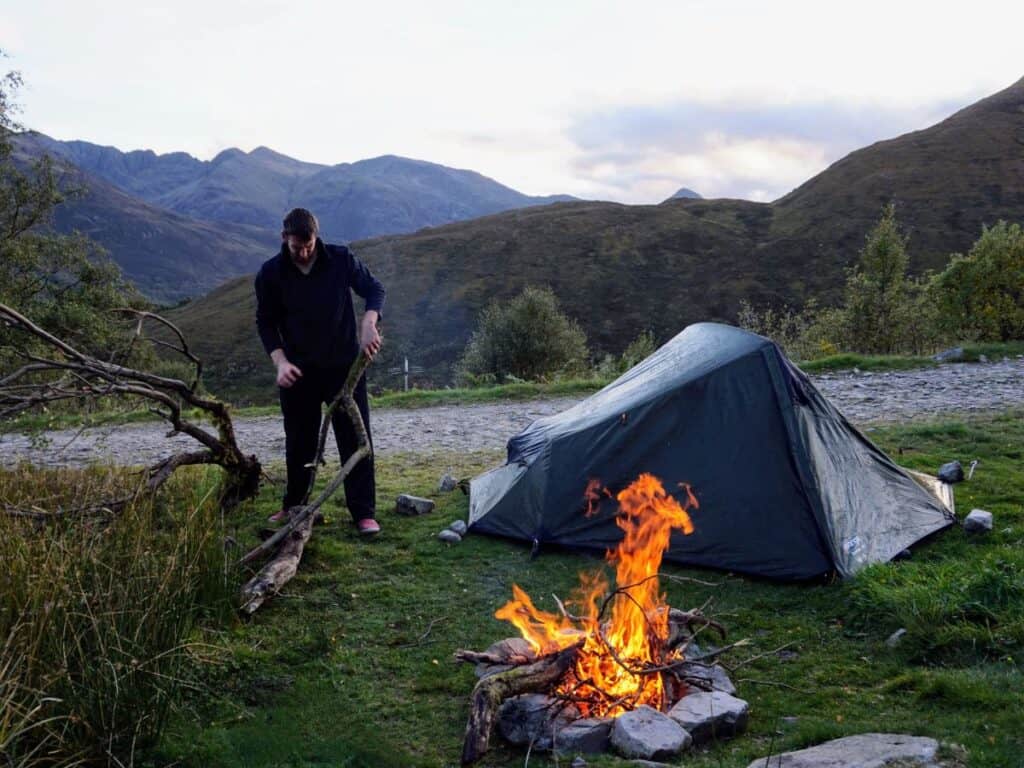
Scotland offers the most liberal wild camping laws in the UK. Thanks to the Land Reform Act, wild camping is legal on most unenclosed land — a right that celebrated its 20th anniversary in 2023. This legislation has allowed generations of campers to connect with Scotland’s breathtaking landscapes responsibly.
The key is following the Scottish Outdoor Access Code:
- Leave no trace of your campsite
- Avoid areas with livestock during lambing season
- Keep safe distance from buildings and roads
- Respect other land users
- Take responsibility for your actions
England: Mostly Restricted, Some Exceptions
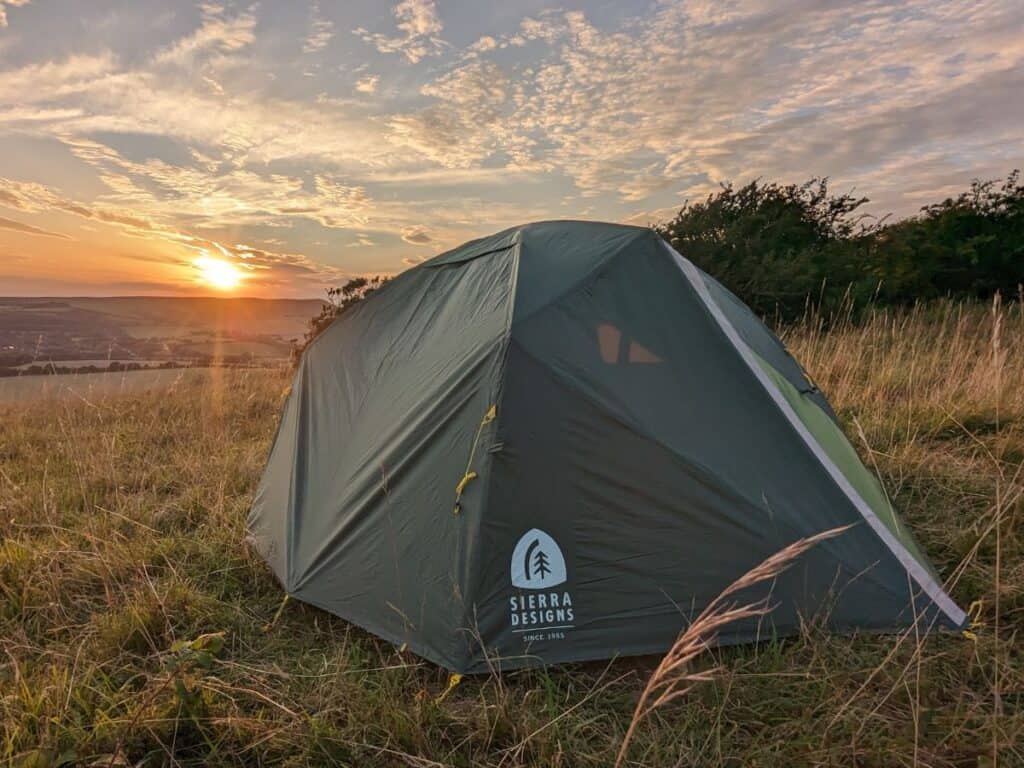
In England, wild camping is generally not permitted on private land without landowner permission. However, there’s one major exception: Dartmoor National Park.
Dartmoor has a long-standing tradition of wild camping under the Dartmoor Commons Act 1985. This right was challenged by landowners in 2023, leading to a temporary ban, but the Supreme Court ruled definitively in May 2025 that wild camping is a legal right on Dartmoor Commons.
This makes Dartmoor England’s only location where wild camping is legally protected, and the ruling supports the broader ‘Right to Roam’ movement, which campaigns for similar access legislation across England and Wales.
Wales: Similar to England

Wales operates under similar restrictions to England, with wild camping typically requiring landowner consent on private land. However, Wales has a strong tradition of outdoor access, and many areas welcome responsible visitors.
The country’s diverse landscapes — from Snowdonia’s dramatic peaks to the remote hills of mid-Wales — offer excellent wild camping opportunities for those who approach landowners respectfully. Many farmers and estate owners are surprisingly accommodating when asked politely, especially if you demonstrate knowledge of responsible camping practices.
Northern Ireland: Permission Required
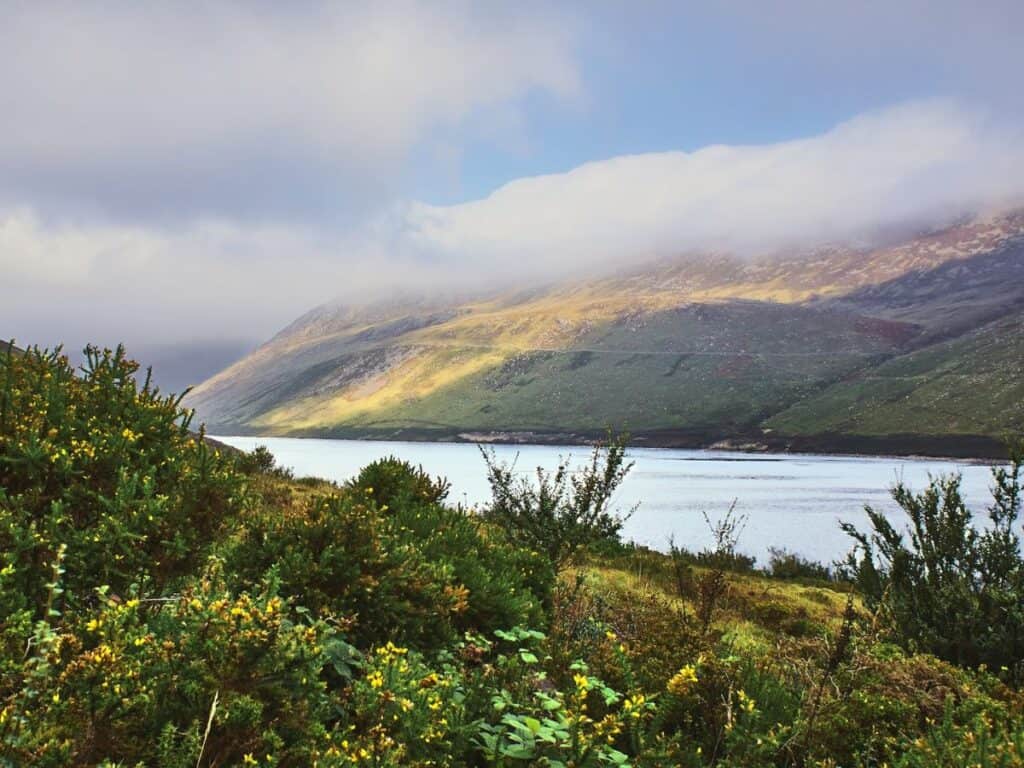
Northern Ireland follows similar legal principles to England and Wales, with wild camping generally requiring landowner permission on private land. However, the smaller scale and tight-knit rural communities often work in your favour when seeking permission.
The landscape offers stunning opportunities, from the Mourne Mountains to remote coastal areas, and locals are often willing to help visitors who show genuine respect for the land and farming activities. Building relationships with local communities and demonstrating commitment to Leave No Trace principles frequently opens doors that might otherwise remain closed.
The Reality of Wild Camping in England and Wales
While wild camping is technically illegal without permission across most of England and Wales, the practical reality is more nuanced.
Discrete wild camping is often tolerated in remote areas of popular locations like the Lake District, Peak District, Snowdonia, and Brecon Beacons, provided you follow Leave No Trace principles, camp well away from paths and roads, and remain completely unobtrusive.
The key is being respectful, responsible, and invisible – arrive late, leave early, and ensure no one even knows you were there.
What Happens if You Get Caught?

If discovered wild camping where it’s not permitted, consequences are typically mild. Most likely, a landowner or authority figure will ask you to pack up and move along, and in some instances, they may request your personal details. However, you’re not legally obligated to provide this information.
The key is being respectful and complying with the request to leave. Most importantly, don’t return to that location, as doing so could create further issues.
In my experience as a wild camper, being discovered is actually quite rare. Unless you count the occasional curious sheep! When done correctly, following Leave No Trace principles and choosing discrete locations, you shouldn’t experience any problems. It’s about knowing where to go, how to behave, and leaving areas exactly as you found them.
Wild camping is considered a civil matter, not a criminal offense, so legal consequences like fines or criminal records are unlikely. Follow responsible camping practices, be courteous if approached, and you can enjoy wild camping adventures without conflict.
For a detailed breakdown of the legal implications and potential penalties, read my complete guide to wild camping punishment in the UK.
Best Places to Camp in the UK
The UK offers incredible diversity for camping enthusiasts, from England’s rolling countryside to Scotland’s dramatic highlands. Here are the standout locations that showcase the best of British camping, each with its own character and camping opportunities.
Dartmoor National Park, England
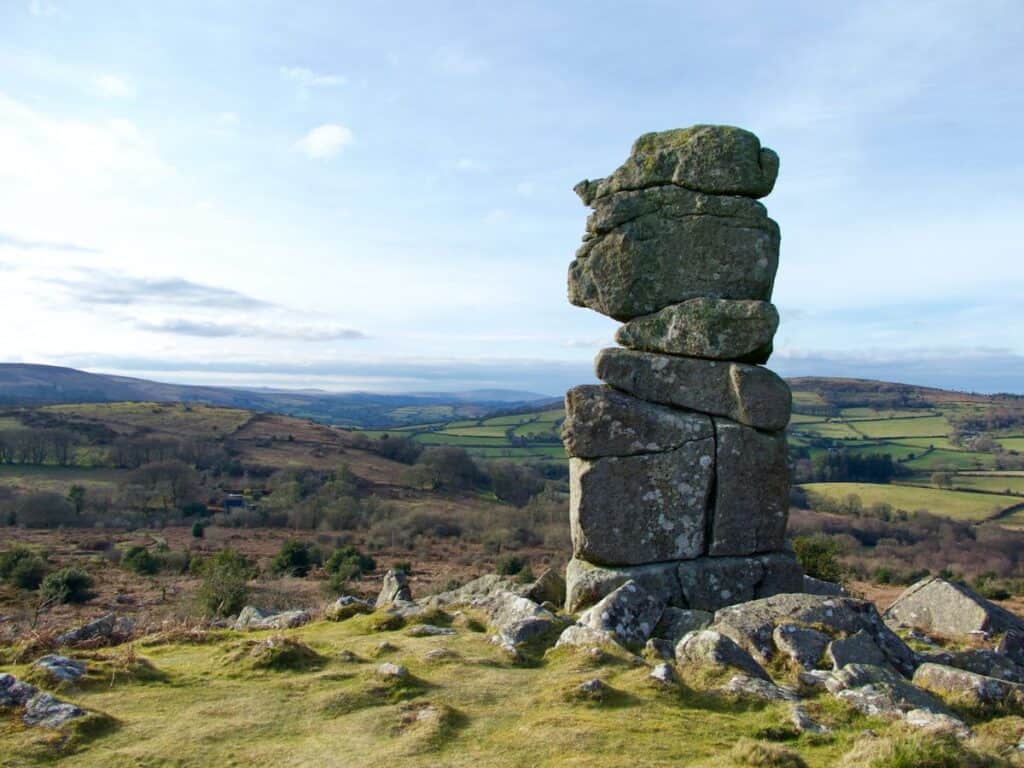
Dartmoor is famous for wild beauty, open moorlands, and captivating landscapes. It’s England’s only location where wild camping is legal without permission, making it incredibly special for wild camping enthusiasts.
The diverse terrain includes everything from gentle rolling hills perfect for beginners to challenging high moors for experienced campers. Always check current access restrictions and weather conditions before heading onto the moors.
Scottish Highlands: The Wild Camping Capital
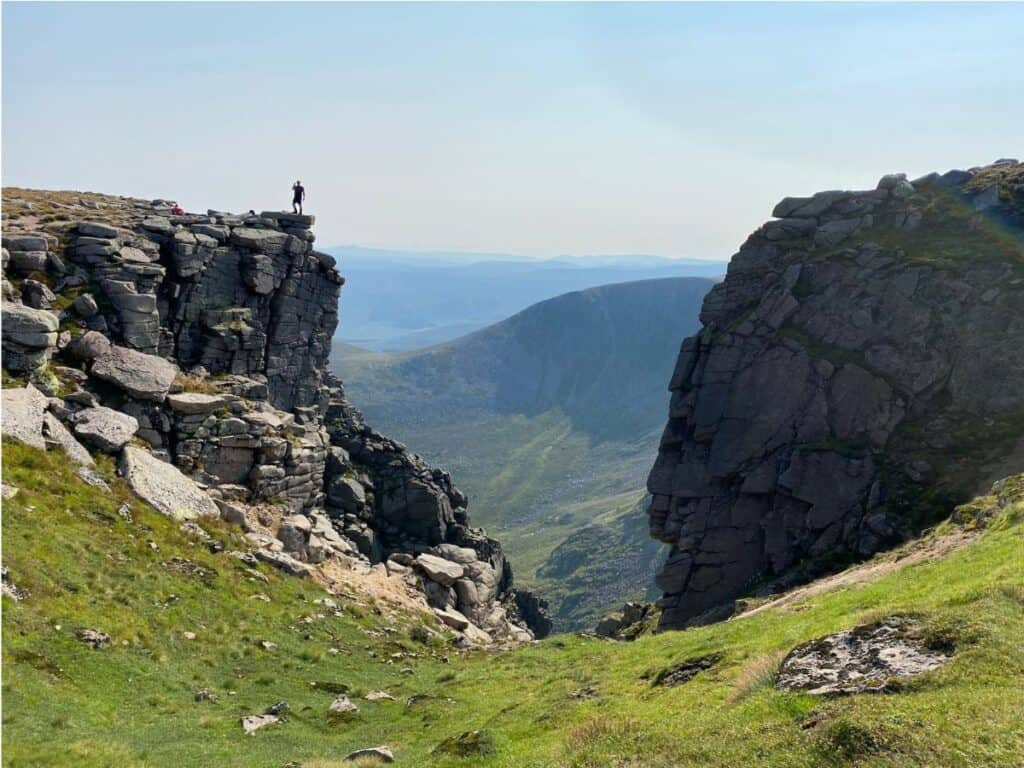
Scotland’s Right to Roam makes it the UK’s premier wild camping destination. From remote Hebridean beaches to dramatic Glencoe peaks, you’ll find opportunities unavailable elsewhere in Britain.
Top Scottish Locations:
- Cairngorms: Home to some of the UK’s highest mountains with dramatic landscapes
- Isle of Mull: Rugged cliffs to gentle beaches with diverse terrain
- Loch Lomond: Waterside spots and wooded areas within Trossachs National Park
Start with accessible areas like Loch Katrine before tackling remote Highland locations. Weather changes rapidly, so prepare for all conditions regardless of season.
Scotland’s wild camping opportunities are genuinely endless — from hidden lochs where you might not see another soul for days to mountain plateaus with views that’ll make you forget why you ever lived in a city. Discover our favourite 10 best places for wild camping in Scotland for the spots that consistently deliver magic.
Lake District, England
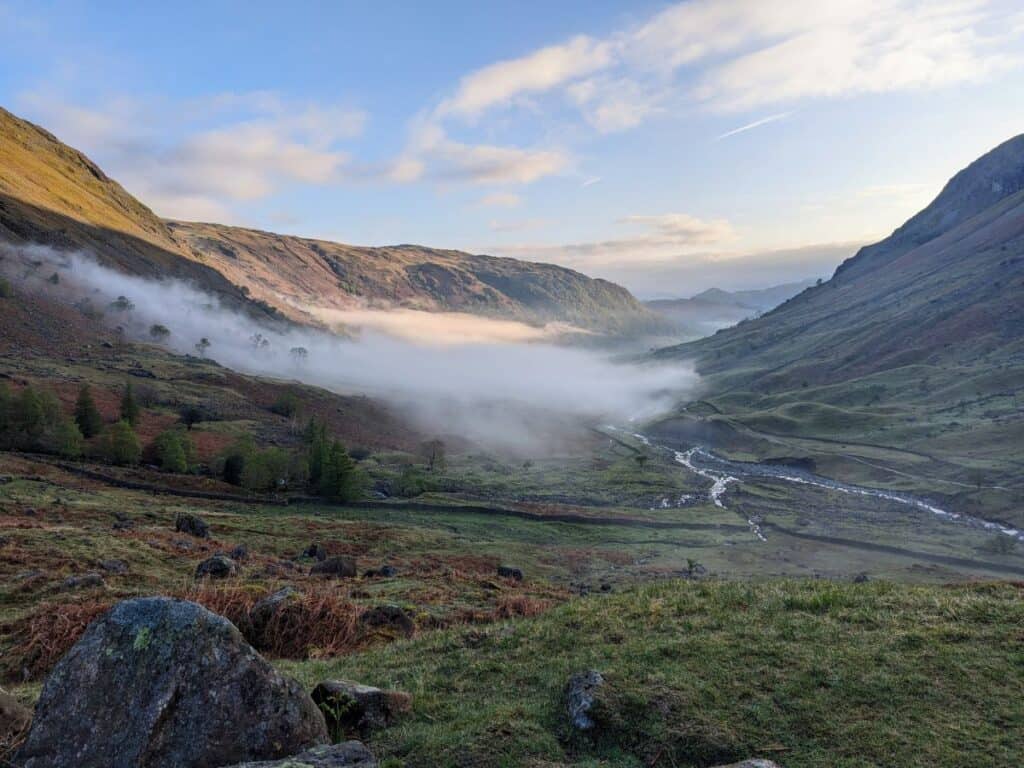
Renowned for breathtaking lakes and rolling hills, the Lake District offers opportunities to camp beside some of the UK’s most beautiful waters. While wild camping isn’t technically legal, discrete camping away from popular areas is often tolerated if you follow Leave No Trace principles.
The region combines excellent family campsites with challenging fell walking, making it perfect for progressing from car camping to wild camping skills. From secluded tarns tucked between fells to quiet valleys where morning mist dances across the water, the Lakes never fail to deliver that perfect wild camping moment.
Check out my top 10 wild camping spots in the Lake District for locations that balance stunning scenery with the discretion needed for responsible camping.
Welsh National Parks
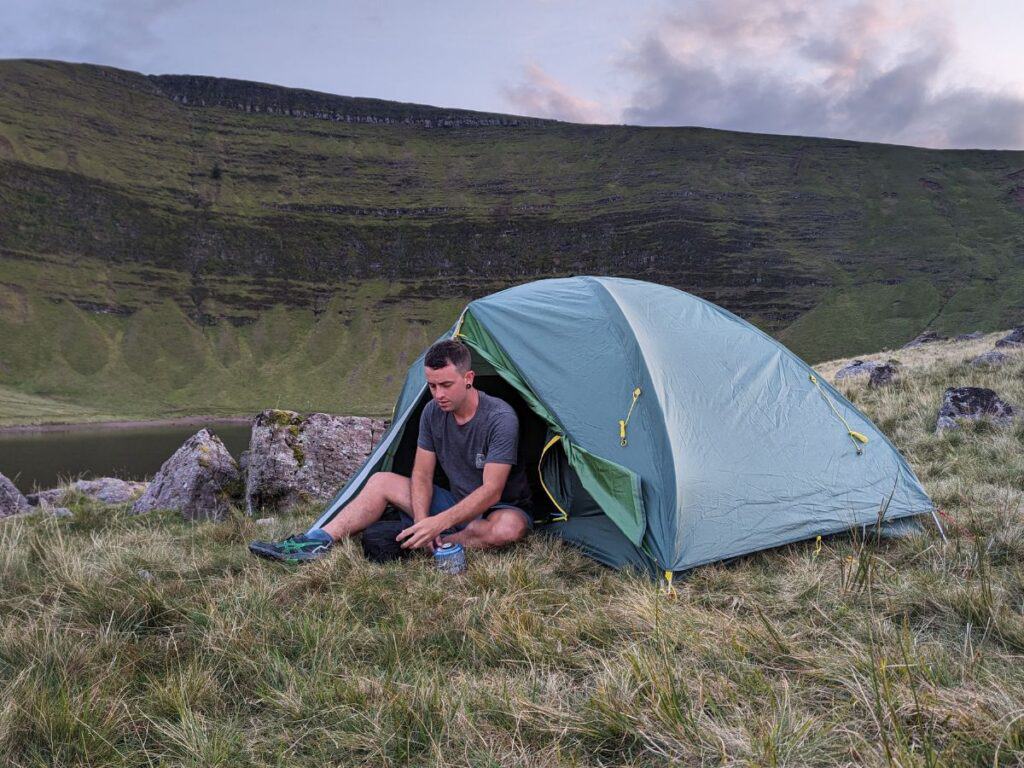
Brecon Beacons offers rugged terrains with picturesque views and plenty of hiking trails. This part of Wales provides perfect locations to immerse yourself in wilderness while building wild camping confidence.
Snowdonia National Park showcases towering peaks and serene lakesides — paradise for hikers and wild campers alike. While not strictly legal, wild camping is generally tolerated in remote areas if you’re discrete and responsible.
Wales packs incredible diversity into its compact borders — from Snowdonia’s knife-edge ridges to the Brecon Beacons’ rolling moorlands where red kites wheel overhead. The country’s wild camping opportunities reward those who venture beyond the obvious spots. Explore our complete guide to wild camping in Wales for hidden gems that capture the true spirit of Welsh wilderness.
Yorkshire Dales & Peak District, England

Both locations feature expansive moorlands, striking valleys, and tranquil landscapes ideal for wild camping. Though technically requiring permission, discrete camping following Leave No Trace principles is often overlooked, especially in remote areas.
These regions offer excellent stepping stones between family camping and full wild camping, with established campsites providing backup options if wild camping doesn’t work out.
Essential Gear for UK Camping
Your gear choices can transform camping from endurance test to genuine enjoyment. British weather demands equipment that handles everything from blazing summer heat to sideways rain and unexpected snow. Here’s what matters most for camping success in the UK.
Shelter Systems
Family Car Camping Tents Large, spacious designs with multiple rooms work brilliantly when you can drive to your pitch. Look for strong waterproof ratings (minimum 3000mm), good ventilation, and robust construction for windy conditions.
Wild Camping Tents Weight and pack size become critical. Choose double-walled construction to handle condensation, strong waterproof ratings, excellent ventilation, and robust guy-lines for exposed locations.
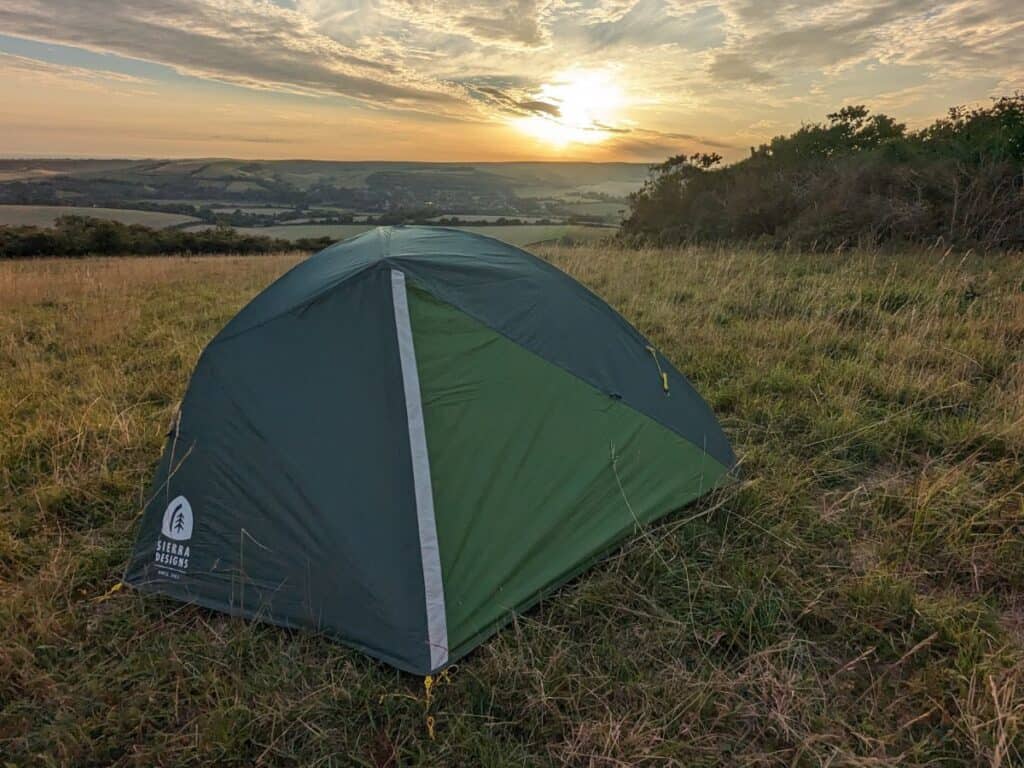
Alternative Shelters
- Bivvy Bags: Minimalistic weather protection that encloses sleeping bags
- Hammocks: Great for woodland camping, offering off-ground comfort
- Tarps: Versatile covers providing additional protection or simple shelters
For in-depth guides on the best tents for UK conditions, including weight comparisons and weather testing, read my best tents wild camping guide. If you’re focusing on family camping, our family tent recommendations cover spacious designs that handle British weather.
If a tent’s not your style, check out my bivvy bag and hammock guides to find your ideal setup.
Sleep Systems: Your Foundation for Comfort
A good night’s sleep makes everything better. Your sleep system has three critical components working together.
Sleeping Bags Temperature ratings must match expected conditions. UK summers rarely drop below 5°C, but spring and autumn can see near-freezing nights. Down insulation packs smaller and weighs less, while synthetic fills perform better when damp — crucial for unpredictable British weather.
Sleeping Mats Essential for insulation from cold ground. Closed-cell foam pads are bombproof but bulky. Inflatable pads offer superior comfort and pack size but can puncture. R-value ratings indicate insulation effectiveness — higher numbers for colder conditions.
Pillows Proper neck support dramatically improves sleep quality. Inflatable pillows pack tiny, or stuff spare clothes into a pillowcase for zero weight penalty.
Sleeping Bag Liners (Optional) Add extra warmth layer, keep sleeping bags clean, and provide comfort when temperatures are borderline.
My sleeping bag round-up help you choose the right temperature rating and insulation type for UK camping, while our sleeping mat guide covers everything from ultralight options to family car camping comfort.
Cooking & Camp Kitchen Essentials
Hot food and drinks transform camping from survival into comfort. Your setup depends on group size, camping style, and conditions.
Camping Stoves Range from tiny gas canister burners for solo backpacking to large multi-burner setups for family car camping. Consider fuel availability, boil times, wind resistance, and pack size. Gas stoves offer convenience, liquid fuel works in all temperatures, wood stoves use natural fuel.
Cookware Should be lightweight, durable, and efficient. Titanium costs more but weighs less. Aluminium offers good value and heat distribution. Non-stick coatings make cleaning easier but can scratch with rough use.
Essential Camp Kitchen Items:
- Sharp knife and compact cutting board
- Spork (combines spoon and fork functionality)
- Lightweight mug for hot drinks
- Water bottles or hydration system
- Water purification tablets or portable filter
- Cleanup supplies and biodegradable soap
Finding the right stove for British conditions means considering wind resistance and fuel availability — my camping stove buyers guide has everything from ultralight gas burners to multi-fuel setups. For complete camp kitchen setup, our camping cookware guide covers pots, pans, and utensils that balance weight with functionality.
Navigation & Safety Equipment
Maps and Navigation Paper maps and compass remain essential — technology fails, batteries die, GPS signals get blocked. Learn basic navigation skills and practice in familiar areas before heading remote.

Lighting
- Head torches: Essential for hands-free camp tasks
- Backup torch: Always carry secondary light source
- Lantern: Area lighting for camp comfort
Safety Essentials
- First aid kit: Compact kit with basics for minor injuries
- Emergency whistle: International distress signal
- Emergency shelter: Lightweight bivi or space blanket
- Mobile phone: With offline maps downloaded
For hands-free lighting that won’t let you down when setting up camp in the dark, check our head torch reviews covering everything from ultralight models to powerful beams for winter camping. MY first aid kit essentials guide helps you build a medical kit that covers common camping injuries without unnecessary weight.
Comfort & Convenience Items
Camping Chairs Transform camp relaxation, especially for car camping. Lightweight options exist for backpacking, while car campers can prioritize comfort over weight.
Storage Solutions
- Dry bags: Keep essentials protected from moisture
- Packing cubes: Organize gear efficiently
- Stuff sacks: Compress sleeping bags and clothing
Weather Protection
- Quality waterproofs: Don’t skimp on rain protection
- Warm layers: UK weather changes rapidly
- Gaiters: Keep legs dry in long grass
Comfort makes all the difference during long days outdoors — My camping chair reviews compare lightweight backpacking options with car camping luxury, while my camping accessories guide covers all the small items that transform basic camping into genuine comfort.
Planning & Safety for UK Camping
Proper planning transforms camping from a potentially miserable experience into genuine adventure. British weather and terrain demand respect, but with the right preparation, you can camp safely and comfortably in conditions that would challenge even experienced outdoor enthusiasts from milder climates.
Choosing Your Location
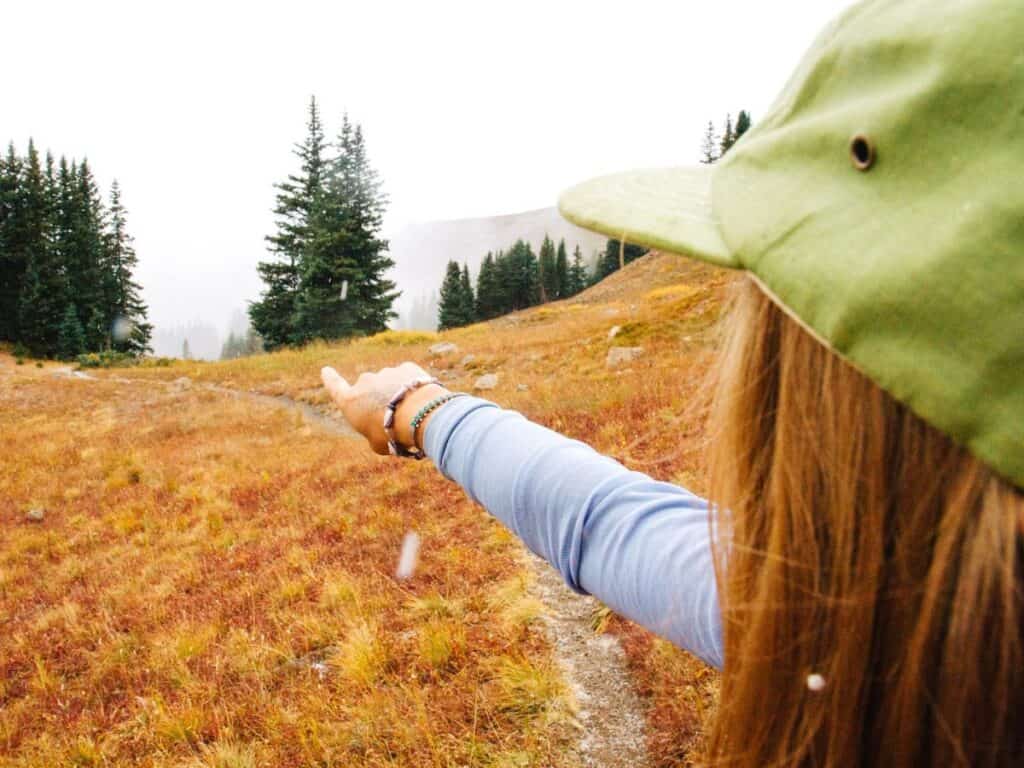
Established Campsites Research facilities, book ahead during peak season, and read reviews focusing on your priorities — family facilities, dog-friendliness, or access to activities.
Wild Camping Locations Use OS Maps to identify potential spots, but always have backup options. Look for flat ground away from water courses (flood risk), natural windbreaks, and signs of previous responsible use like existing fire circles.
Avoid obviously private land, nature reserves, ecologically sensitive areas, and anywhere with “No Camping” signs.
Weather Awareness & Safety
British weather changes rapidly, especially in mountain areas. Use detailed forecasts specific to your location, understand how terrain affects weather patterns, and have contingency plans for deteriorating conditions.
Warning Signs Include:
- Rapidly changing cloud patterns
- Sudden temperature drops
- Increasing wind strength
- Deteriorating visibility
Don’t push on if conditions worsen — retreat and try another day.
Emergency Procedures
- Leave detailed plans with someone reliable
- Know how to call Mountain Rescue (999, ask for Police, then Mountain Rescue)
- Carry emergency communication device in remote areas
- Understand basic first aid and hypothermia prevention
The 8 Golden Rules of Wild Camping
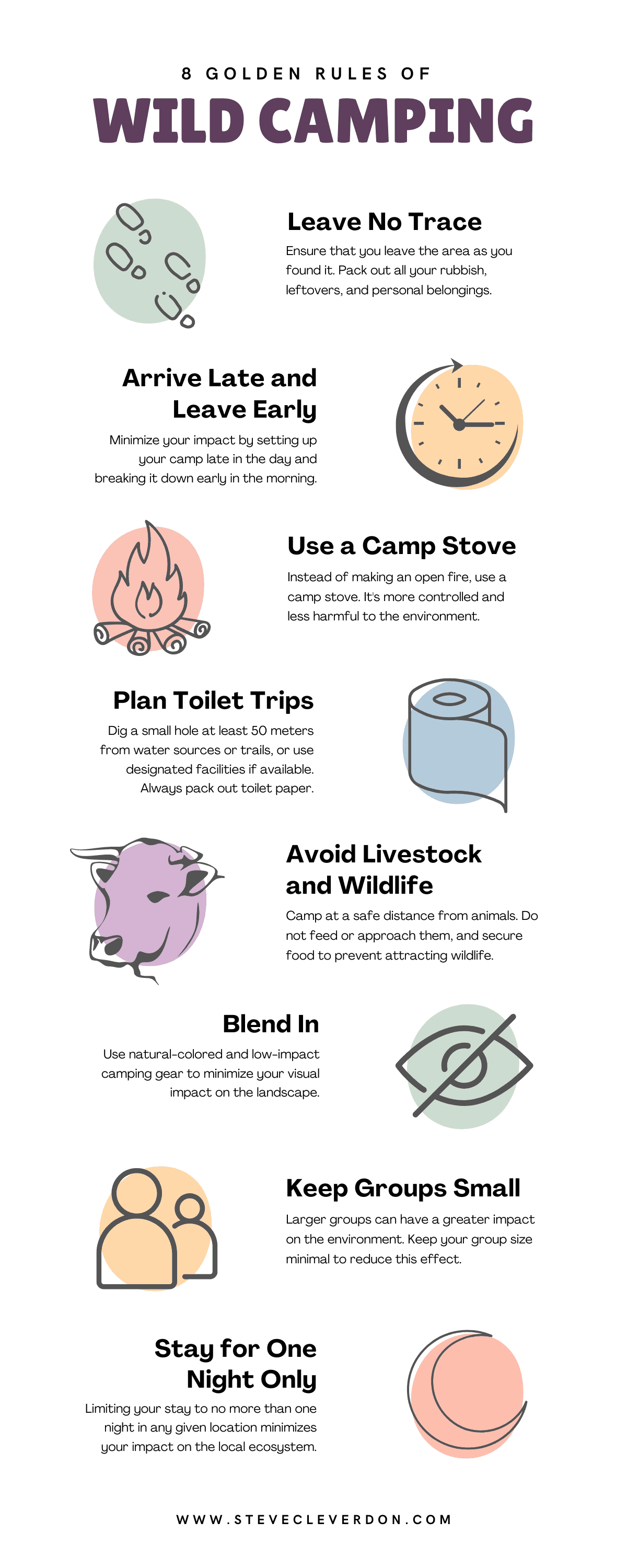
These principles are crucial for preserving nature and respecting others while enjoying wild camping:
- Leave No Trace: Pack out all rubbish, leftovers, and belongings. Leave the area exactly as you found it.
- Arrive Late and Leave Early: Minimize impact by setting up late in the day and breaking camp early morning.
- Use a Camp Stove: Instead of open fires, use controlled cooking methods that don’t damage the environment.
- Plan Toilet Trips: Dig catholes 50+ metres from water sources, pack out toilet paper, or use natural alternatives responsibly.
- Avoid Livestock and Wildlife: Camp safely distant from animals, never feed them, secure food to prevent attracting wildlife.
- Blend In: Use natural-coloured gear to minimize visual impact on landscapes.
- Keep Groups Small: Smaller groups have less environmental impact and are more discrete.
- Stay One Night Only: Limit stays to minimize ecosystem impact and avoid appearing to establish permanent camps.
Winter Camping in the UK
Winter camping transforms the familiar landscapes of the UK into something entirely different. Snow-dusted peaks, frozen lakes, and crystal-clear views reward those brave enough to venture out when most people stay indoors. But winter camping isn’t just about enduring harsh conditions — it’s about developing serious outdoor skills and experiencing Britain’s mountains and moors in their most dramatic state.
This isn’t beginner territory. Winter camping demands experience, proper gear, and respect for conditions that can turn dangerous quickly. If you’re new to camping, build your skills through spring, summer, and autumn before attempting winter expeditions.
When You Need 4-Season Gear
The transition from 3-season to 4-season camping isn’t just about temperature. It’s about dealing with snow loading on your tent, condensation that freezes inside your shelter, and equipment that behaves differently in sub-zero conditions.
You’ll need 4-season gear when night temperatures drop below -5°C, when snow is forecast, or when you’re camping above 400m elevation during winter months. In the UK, this typically means December through February in most locations, extending into March and April at higher elevations.
The difference isn’t subtle. Standard camping gear that works fine in autumn can fail catastrophically in winter conditions. Tent poles snap under snow load, sleeping bags lose insulation when damp, and stoves refuse to light in extreme cold.
Essential Winter Camping Gear
Four-Season Tents Your tent becomes a life-support system in winter conditions. Four-season designs feature stronger poles to handle snow loading, fewer mesh panels to retain warmth, and robust guy-line systems for high winds. Geodesic designs like those from Hilleberg or Mountain Hardwear distribute loads effectively, while tunnel tents offer more internal space but require careful positioning relative to prevailing winds.
Cold-Weather Sleep Systems Your sleeping bag rating needs significant buffer below expected temperatures. If you expect -5°C, use a bag rated to -10°C or lower. Down insulation provides the best warmth-to-weight ratio but loses insulation when wet. Synthetic fills perform better in damp conditions but are heavier and bulkier.
Sleeping mats become critical for ground insulation. Look for R-values of 4 or higher, and consider using two mats for extra insulation. Closed-cell foam mats never puncture and provide backup if your inflatable mat fails.
Winter Clothing Systems Layering becomes crucial when temperature swings can exceed 20°C between day and night. Base layers should wick moisture while providing some insulation. Merino wool works excellently, while synthetic materials dry faster. Mid-layers provide primary insulation — down jackets pack small but synthetic insulation works better in wet conditions.
Shell layers must handle everything British weather throws at them. Look for waterproof ratings above 20,000mm and breathability ratings above 15,000g/m²/24hr. Avoid anything described as “water resistant” — you need full waterproof protection.
Reliable Winter Stoves Gas stoves struggle below 0°C as butane stops vaporising. Liquid fuel stoves like MSR WhisperLite work reliably in extreme cold, while gas stoves with remote canisters perform better than integrated designs. Always carry backup lighting methods — piezo igniters fail in cold conditions.
Winter Safety Considerations
Hypothermia Recognition Early hypothermia symptoms include uncontrollable shivering, loss of fine motor control, and poor decision-making. Advanced symptoms include cessation of shivering, confusion, and loss of coordination. Prevention involves staying dry, maintaining energy levels through regular eating, and recognising deteriorating conditions early.
Avalanche Awareness UK avalanches are less common than Alpine conditions but still occur in Scottish Highlands, Lake District, and Welsh mountains. Understand basic avalanche terrain — slopes between 30-45 degrees are most dangerous, convex slopes more risky than concave, and wind-loaded slopes particularly hazardous. Carry avalanche transceivers, probes, and shovels when conditions warrant.
Emergency Procedures Winter emergencies escalate faster than summer incidents. Carry emergency shelters, know how to build snow caves, and understand when to call Mountain Rescue. Mobile coverage is patchy in mountains, so consider satellite communication devices for remote winter expeditions.
For more advice on winter-specific risks and detailed gear recommendations, read my complete winter camping safety tips and gear guide covering everything from layering systems to emergency procedures.
Building Winter Skills
Start Small Don’t jump straight into Scottish Highland winter camping. Begin with winter car camping to test gear and learn how equipment behaves in cold conditions. Progress to short winter backpacking trips with easy escape routes before attempting serious mountain expeditions.
Practice at Home Set up your winter tent in the garden during cold snaps. Learn how condensation forms and how ventilation reduces it. Practice lighting your stove wearing gloves, and understand how long everything takes when your fingers are cold.
Join Experienced Groups Winter skills are best learned from experienced practitioners. Mountain clubs, outdoor centres, and commercial guiding services offer winter skills courses covering everything from navigation in whiteout conditions to emergency bivouac techniques.
Recommended Winter Locations
Beginner Winter Camping The South Downs offer gentler introduction to winter conditions with lower elevation and milder climate. Yorkshire Dales provide excellent winter training with good access to mountain rescue if needed. Dartmoor gives you legal wild camping with varied terrain but can experience severe weather.
Intermediate Locations Brecon Beacons offer serious winter conditions without the remoteness of Scottish Highlands. Lake District fells provide excellent winter challenges with good infrastructure for emergencies. Both locations require solid winter skills but offer escape routes if conditions deteriorate.
Advanced Winter Destinations Scottish Highlands represent the UK’s most serious winter camping. The Cairngorms, in particular, experience true Arctic conditions with temperatures dropping to -20°C and winds exceeding 100mph. These locations demand advanced mountaineering skills, proper equipment, and conservative decision-making.
Winter camping pushes you beyond normal comfort zones, teaching self-reliance and mountain skills impossible to develop in fair weather. The landscapes are spectacular, the challenges real, and the satisfaction immense. But respect the conditions — British mountains have claimed experienced mountaineers who underestimated winter’s power.
For gear that handles the UK’s harshest conditions, explore my 4-season tent reviews that test performance in snow loading and extreme winds. My winter sleeping bag guide helps you choose insulation that works when your life depends on staying warm, while my winter camping safety guide covers essential skills from hypothermia prevention to emergency shelter techniques.
Essential Skills for UK Camping
Great camping isn’t just about having the right gear — it’s about knowing how to use it effectively and developing the practical skills that keep you safe, comfortable, and confident in the outdoors. These core skills separate enjoyable camping from miserable nights under canvas.
Water Management

Finding and Treating Water Natural sources like streams and lakes are common near good camping spots, but always treat water from natural sources:
- Portable filters: Remove bacteria and parasites
- Boiling: One minute at sea level, three minutes above 2000m
- Purification tablets: Lightweight backup option
- UV sterilizers: Quick and effective for clear water
Avoid water near agriculture or industrial activity, and collect upstream from animal access points.
Weather Protection
Layering Systems
- Base layers: Moisture-wicking materials next to skin
- Insulating layers: Fleece or down for warmth
- Shell layers: Waterproof/windproof outer protection
Tent Ventilation Even in cold weather, crack vents for air circulation. Wipe down condensation each morning before packing up.
Packing Your Rucksack

Efficient packing makes everything easier, especially for wild camping and backpacking.
Weight Distribution:
- Heavy items close to your back, middle of pack
- Lighter items at bottom or outside
- Frequently used items easily accessible
Organisation:
- Use compression bags for sleeping gear
- Keep rain gear accessible
- Group similar items in stuff sacks
- Balance weight between pack sides
Master the art of efficient packing with our complete backpack packing guide, covering weight distribution, accessibility, and organisation systems that make everything easier to find when you need it.
Beginner Tips & Troubleshooting
Every experienced camper has learned through trial and error — usually more error than they’d care to admit. These practical tips help you avoid common pitfalls and solve problems before they ruin your trip.
Starting Your Camping Journey
Test at Home First Set up your tent in the garden, sleep outside, discover what works before committing to remote locations.
Start with Local Sites Choose campsites within an hour of home for low-risk introduction. If something goes wrong, you can easily return rather than enduring miserable conditions.
Progress Gradually Move from car camping to backpacking to wild camping. Each step builds skills while expanding your comfort zone.
Common Problems & Solutions
Tent Issues The most common complaint is “my tent leaked everywhere!” but this is usually condensation rather than actual leaks. Check that your groundsheet doesn’t extend beyond the flysheet edges, ensure guy-lines are properly tensioned, and avoid touching tent walls when they’re wet inside. Most importantly, crack a vent even in cold weather for air circulation.
Sleep Problems Can’t sleep because you’re freezing? Remember that sleeping bag temperature ratings are survival minimums, not comfort zones. Add a liner for extra warmth, wear dry layers inside your sleeping bag, and make sure you’re using a proper sleeping pad for ground insulation. Eating something before bed helps fuel your internal heating system.
Wet Gear Everything soaked in your pack? This happens even with “waterproof” rucksacks. Use waterproof stuff sacks for essentials like spare clothes and sleeping gear, keep them in separate dry bags, and pack a rain cover inside your rucksack as backup. Never assume pack fabric alone will keep contents dry in British weather.
Camping with Family
Make It Fun, Not Endurance Let children help with age-appropriate tasks, pack favourite comfort items, and choose locations with interesting features like beaches or easy walks.
Extra Considerations
- More clothing layers (kids get cold faster)
- Entertainment for tent time during rain
- Extra safety vigilance around water and fires
- Choose sites with good facilities until kids develop outdoor skills
Resources & Next Steps
Essential Skills Development
Consider courses in navigation, first aid, and outdoor leadership. Connect with local outdoor groups — the community is incredibly welcoming to enthusiastic newcomers who respect the environment.
Gear Guides & Reviews
Shelter & Sleep: Discover my detailed reviews of the best wild camping tents for UK conditions, covering weather resistance and pack size priorities. My sleeping bag temperature guide helps you choose the right insulation for year-round camping, while my sleeping mat reviews compare insulation values and comfort levels.
Cooking & Accessories: For reliable cooking in all weather, read my comprehensive stove reviews covering gas, liquid fuel, and wood-burning options and my essential camping accessories roundup that covers everything else you need for successful trips.
Skills & Destinations: Understanding legal wild camping requires local knowledge — my Scotland wild camping guide covers legal locations and responsible practices, while my Wales wild camping spots help you find the best discrete locations. For specific regional advice, my Lake District wild camping guide reveals discrete locations and safety considerations for England’s most popular destination.
Final Thoughts
Camping in the UK — whether at established family sites or wild camping in remote locations — offers incredible opportunities to connect with our island’s diverse landscapes. From Cornwall’s coastal campsites to Scotland’s mountain wilderness, there’s something magical about sleeping under British stars.
The key to great camping experiences is proper preparation, appropriate gear, and respect for both the environment and other land users. Start within your comfort zone, build skills gradually, and never stop learning from more experienced campers.
Whether you’re planning your first family camping weekend or dreaming of solo wild camping adventures in the Scottish Highlands, remember that the best camping trips aren’t about enduring the outdoors — they’re about genuinely enjoying them.
Pack smart, camp responsibly, and discover why a night under canvas beats any hotel room. Britain’s landscapes are waiting, and they’re best experienced with tent pegs in the ground and a brew on the boil.
Happy camping!
Ready to start your camping adventure? Download my complete guide to wild camping and join our community of outdoor enthusiasts getting weekly tips, gear reviews, and destination guides delivered straight to their inbox.
Frequently Asked Questions
Is wild camping safe?
Yes, wild camping is generally safe with proper preparation. The main risks are hypothermia, getting lost, and equipment failure. Always check weather forecasts, carry emergency supplies, tell someone your plans, and use appropriate gear for conditions.
Where can I legally wild camp in the UK?
Scotland allows wild camping on most unenclosed land under the Land Reform Act. Dartmoor National Park is the only legal location in England. Wales and Northern Ireland require landowner permission, though discrete camping is often tolerated in remote areas.
What’s the difference between wild camping and normal camping?
Wild camping means pitching away from designated campsites without facilities like toilets or shops. You must be completely self-sufficient. Normal camping uses established campsites with facilities and marked pitches.
How much does wild camping gear cost?
Basic setup costs £300-500, quality mid-range £500-800, premium lightweight gear £800-1200+. Essential items are tent, sleeping bag, sleeping mat, stove, and backpack. Start with budget options and upgrade as you gain experience.
What should I do if I encounter wildlife while camping?
UK wildlife poses minimal danger. Store food securely, keep distance from livestock, never feed animals. Most encounters involve harmless sheep, foxes, or badgers. Make noise when moving around camp at night in deer areas.
Can I light fires when wild camping?
Fire rules vary by location and season. Many areas prohibit fires, especially during dry periods. Where permitted, use existing fire circles, clear vegetation, never leave unattended, and ensure complete extinguishment. Always carry alternative cooking methods.
How do I find water when wild camping?
Natural sources like streams and lakes are common near camping spots. Always treat water using portable filters, boiling for one minute, or purification tablets. Avoid water near agriculture or downstream from animals.
What’s the best time of year for wild camping?
Spring to autumn offers best conditions for beginners with milder weather and longer days. Summer is warmest but busiest. Autumn provides spectacular scenery with fewer crowds. Winter requires advanced skills but offers pristine landscapes.

About the Author
Steve Cleverdon is an outdoor adventure specialist with 15+ years of hiking, camping, and paddle boarding experience. He has conquered Europe’s toughest trails including the GR20 in Corsica, walked 3,000km solo across New Zealand, and worked professionally in the outdoors industry. Steve’s gear reviews and recommendations are based on real-world testing across four continents, from coastal waters to mountain peaks. Learn more about Steve or get in touch.